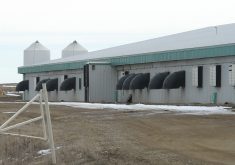Winter wheat growers in Alberta say they’re happy with new grading rules being introduced by the Canadian Grain Commission.
“The changes are good for Alberta producers,” said John Hopkins of Burdett, Alta., a director with the Alberta Winter Wheat Producers Commission.
The CGC will be phasing in the changes over the next couple of years.
• As of Aug. 1, 2011, the CGC proposes that 1 and 2 Canada Western red winter have a minimum protein content of 11 percent.
Winter wheat not meeting this specification will be classified 3 CWRW, a new grade spec, rather than automatically being classified as feed wheat.
Read Also

Phosphate prices to remain high
Phosphate prices are expected to remain elevated, according to Mosaic’s president.
• As of Aug. 1, 2013, five varieties (Kestrel, Clair, Harrier, Falcon and Raptor) will be reassigned to the new CW general purpose, leaving eight varieties eligible for CWRW class, labelled as Select.
The grain commission said the change will help ensure that CWRW varieties produce consistent high quality milling flour and make it easier to market the product abroad.
• As of Aug. 1, 2011, tolerance levels for fusarium damaged 1 and 2 CWRS kernels will be reduced to 0.8 and 1.0 percent respectively, to better reflect the relationship between fusarium damage and deoxynivalenol (DON).
Hopkins noted that most of the changes are focused on the higher end of the market.
“We recognize this new classification meets the needs of producers who can’t meet protein content requirements but still have a good milling-quality grain,” he said.
Rick Istead, executive director of the Alberta commission, said the new specifications reflect changes in the marketplace and provide millers and other customers with a product tailored to meet their needs.
“We support the CGC’s effort to make CWRW a more consistent, high quality milling product that can compete with other hard red winter wheat, including those grown in the United States.”
He expects plant scientists will breed for both classifications, producing high quality milling varieties for CWRW and lower quality CWGP for livestock feed and ethanol production.














